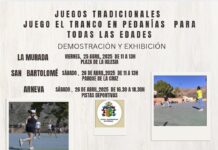A recent report that the London’s Shard still has ten exclusive apartments that remain unsold, at a mere £50 million each, did not come as much of a surprise. These apartments are situated somewhere between the 53rd and 65th floors, so just imagine the difficulties if you wanted to pop out for a pizza and the lift wasn’t working!
It takes all sorts and a great deal of money, of course, but I’m not sure that many people would fancy living in a building 224 metres tall. Imagine entertaining around 6000 visitors a day on the floors above the apartments; think of the sound of all those stilettoes clicking just above your head.
Of course, the building was always intended to show off, and proudly proclaim that “we have the biggest one in the village”, but whether it contributes anything really useful or worthwhile to the quality of life for Londoners, I guess depends upon the size of your wallet. For many, at a time of a housing crisis for ordinary people in London, it is an extravagant and pointless waste of money; still, I guess the estate agents, developers and speculators have to do something with their time.
According to some ‘in the know’, this expensive protrusion in the City is south of the river, and apparently anyone who is anyone wouldn’t be seen anywhere south of the river anyway. In contrast, let us now take a brief step away from a bustling London, to the clean air and tranquillity of the Canary Islands.
One of my local heroes is the Canarian artist, and Lanzarote’s most famous son, César Manrique. He was not just an artist, but a painter, sculpture, architect, ecologist, planner of urban developments, as well as landscaper and gardener. Manrique was fascinated by man’s relationship with nature and became deeply concerned about the success and impact that mass tourism was having upon his beloved Canary Islands.
He witnessed the construction of some of the hideous hotels in the south of Tenerife and Gran Canaria, and was determined that the same violation would not happen to the island of Lanzarote. Fortunately, Manrique’s fame and international acclaim meant that he was listened to.
Following a lengthy stay in New York, Manrique commented that “Man in New York is like a rat”, and concluded that man is not well suited to an artificial environment. Feeling homesick, Manrique returned to Lanzarote, with an intention to turn Lanzarote into one of the more beautiful places on the planet. After his horror at seeing the twelve storey Gran Hotel that had been built in his home town, Arrecife, he declared that no building on the island (except church buildings) should be taller that a Canary palm tree (Phoenix Canariensis), which grows to between 15 to 20 metres in height. Manrique became obsessive with surveying local architecture and the island’s traditional culture, which he saw as the interface between nature and man.
Much to the chagrin of potential developers focussed upon mass tourism and profits from the exploitation of the island, Manrique’s views prevailed and it is now impossible to visit Lanzarote without being aware of his overpowering influence. Tourism development does exist in several popular resorts, but in a controlled manner, and it is still difficult to find buildings that are taller than a palm tree.
Stepping back to London, I sometimes wonder what Manrique would have thought of the Shard, and enormous tower blocks housing hundreds of people within a heavily polluted city landscape. Although his remedy of “no building being taller than a palm tree” would not work in London, New York or Hong Kong, where space is at a premium, I cannot help thinking that he was right, and that the population would be much happier in lower buildings with more space around them. As for the apartments going for a song in the Shard, I think I’ll pass on that one.
If you enjoyed this article, take a look at Barrie’s websites: http://barriemahoney.com and http://thecanaryislander.com or read his latest book, ‘Footprints in the Sand’ (ISBN: 9780995602717). Available in paperback, as well as Kindle editions.
© Barrie Mahoney





